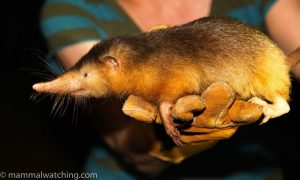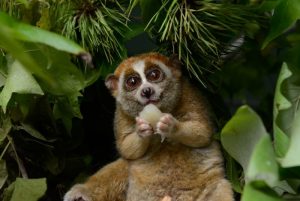“Poison is in everything, and no thing is without poison. The dosage makes it either a poison or a remedy.”
– Paracelsus
When most of us think of venomous animals, what most likely comes to mind are slithery reptiles, multi-legged spiders or anything living in Australia. But did you know that there are venomous mammals? In contemporary nature, venomous mammals are relatively rare. It is suggested by paleontologists that poisonous mammals were once more common.
What are some venomous mammals?
- Well, you may be familiar with the Duck-Billed Platypus that odd Australian (surprise) egg-laying mammal that resembles a cross between a furry duck/beaver. While both male and female platypuses are born with ankle spurs, only the male’s spurs deliver venom from a gland in their thighs, which is potent enough to kill a mid-sized dog. While Platypus venom is not lethal to humans, it is potent enough to temporarily incapacitate a person.
- Several species of shrew; the Eurasian water shrew, the Northern Short-tailed shrew and the Southern Short-tailed shrew, etc.
- And my favorite – the Cuban Solenodon – they are so frigging cute!
 The Cuban Solenodon is endemic to Cuba and related to the Hispaniolan Solenodon. It was previously thought to be extinct, but was recently sighted in the late 1990s and the early 2000s. It is a nocturnal burrower that lives underground, making it hard to find. The Solenodon weighs about 2 pounds and measures 16 – 22 inches from nose to tail with an extremely elongated snout and a long, naked, scaly tail. It resembles members of the Tenrecidae famile that include hedgehogs, shrews, opossums, mice and otters.
The Cuban Solenodon is endemic to Cuba and related to the Hispaniolan Solenodon. It was previously thought to be extinct, but was recently sighted in the late 1990s and the early 2000s. It is a nocturnal burrower that lives underground, making it hard to find. The Solenodon weighs about 2 pounds and measures 16 – 22 inches from nose to tail with an extremely elongated snout and a long, naked, scaly tail. It resembles members of the Tenrecidae famile that include hedgehogs, shrews, opossums, mice and otters.
The Cuban Solenodon is found in dense, humid forest and around plantations. It is an insectivore and comes out at night to hunt insects and lizards. They have a long life span and low reproductive rate as a result of being among the dominant predators in their habitat before Europeans colonized the New World, bringing larger mammals.
Solenodons have venomous bites. Their venom is delivered from modified salivary glands via grooves in their lower incisors.
Currently the Cuban Solennodon is considered an endangered species because it only produces a single litter of one to three pups in a year and because of predation by species that were introduced by humans.
But wait, what if there was a cute, but deadly venomous primate? Impossible, you say? You’re wrong. The Slow Loris (genus Nycticebus) is accepted as the only known venomous primate! And check out cute it is. Look at that face!
There are at least nine recognized species of Slow Loris and they are relatively small, weighing approximately two pounds. They have a dual composite venom that consists of their specialized saliva and secretions from a specialized sweat gland on their forearm. The mixture, which is administered by a bite from an adapted toothcomb, is a potent toxin that in humans can produce necrotic wounds, anaphylactic shock and even death in some circumstances.
So, the next time you go to pet some cute little animal, just remember – “Deadly doesn’t have to be scary looking”.

